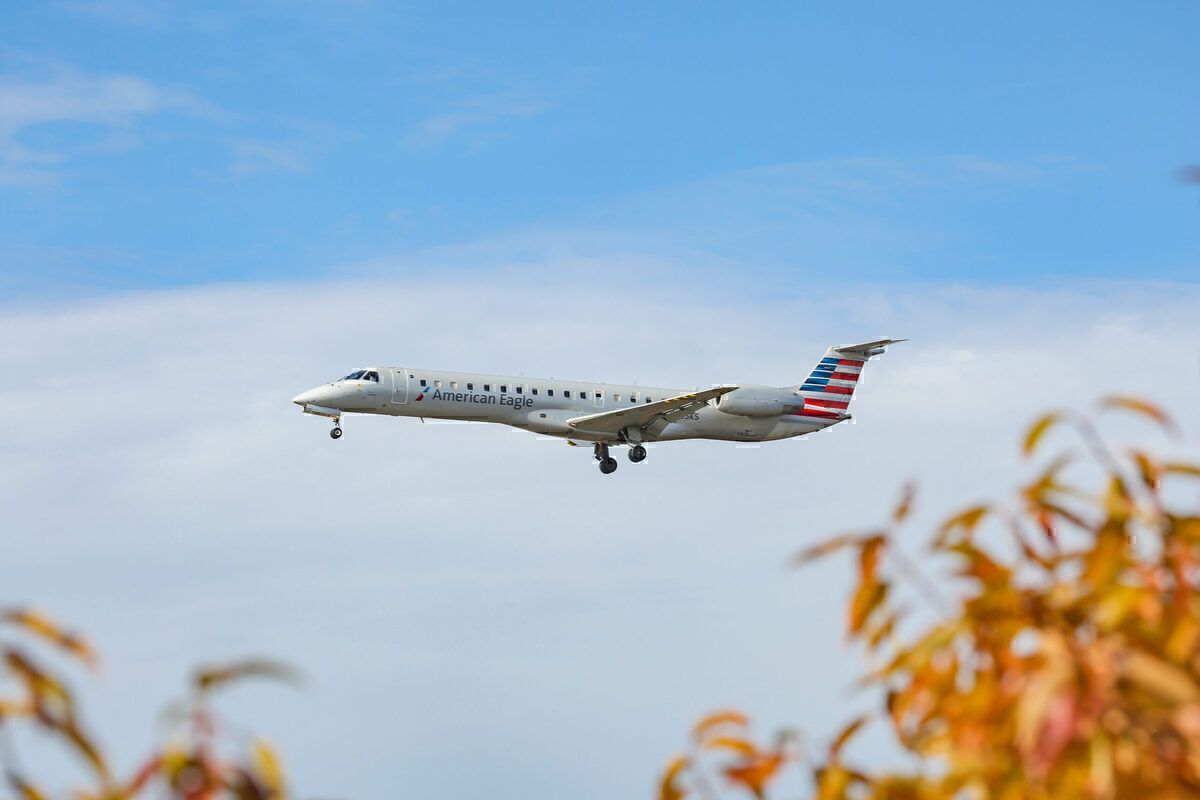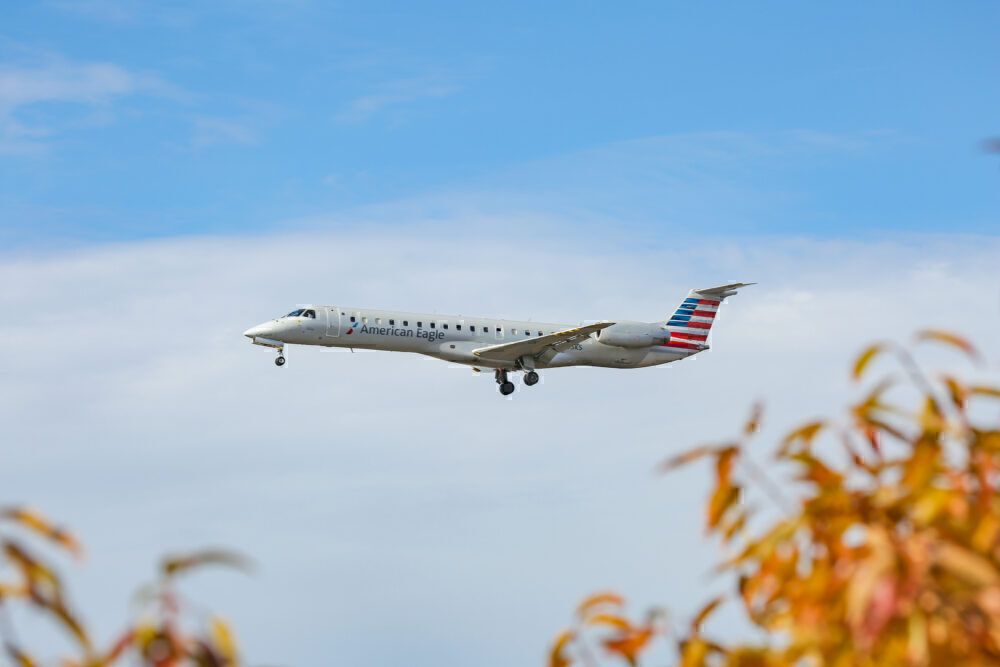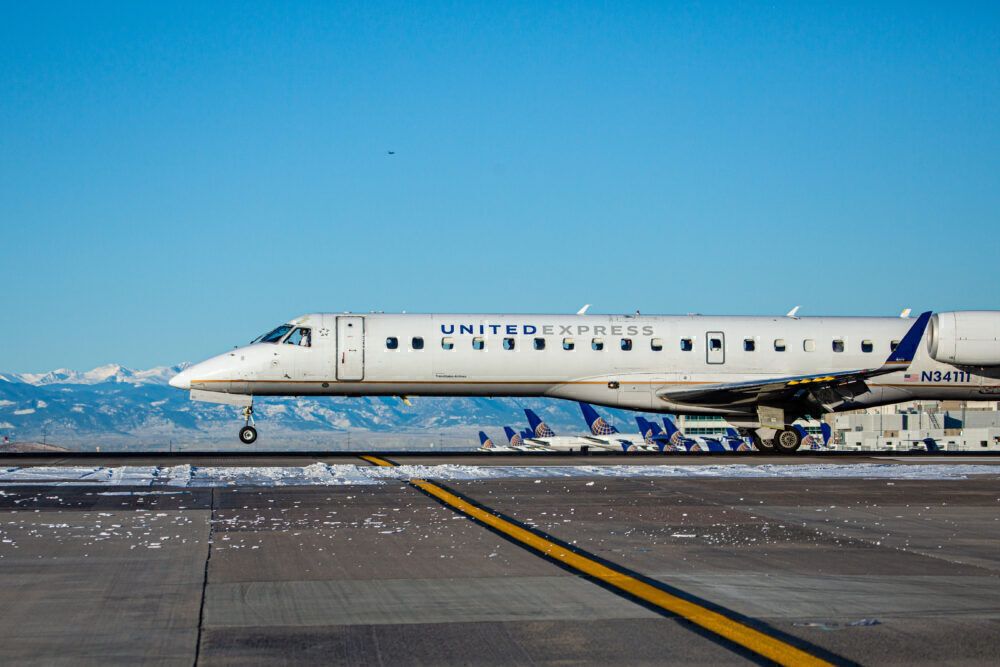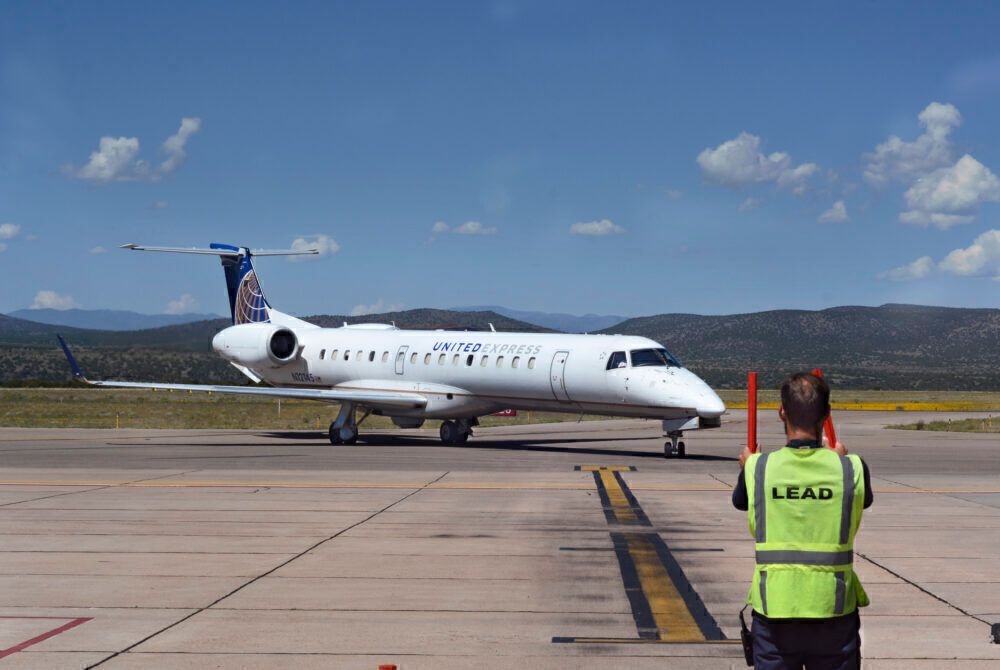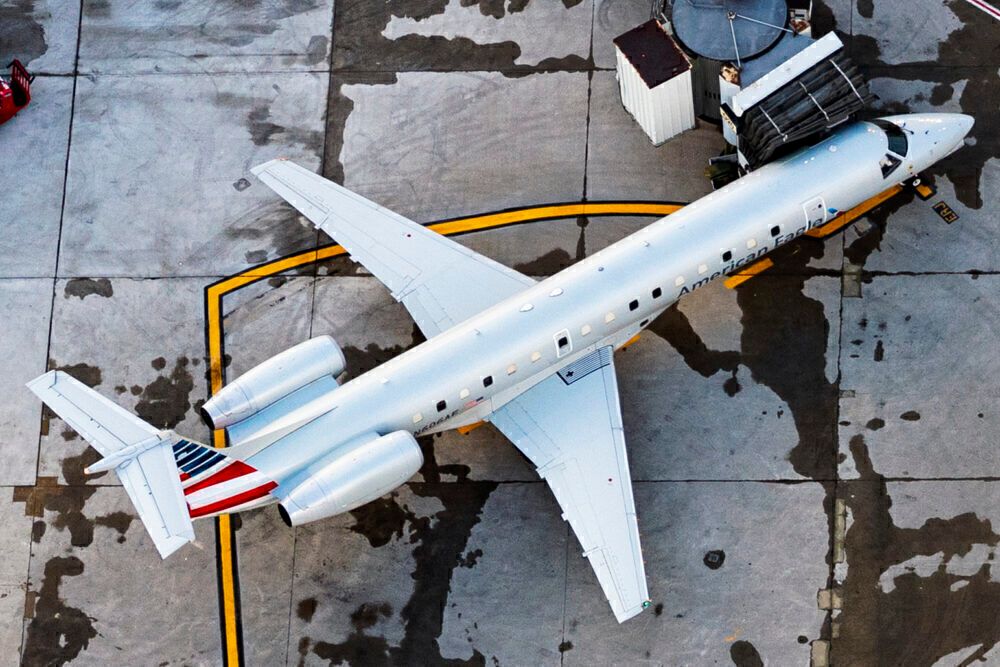The United States Federal Aviation Administration (FAA) has put forward a new airworthiness directive (AD) covering Embraer regional jets. On Embraer ERJ135 and ERJ145 aircraft, the new AD mandates additional general visual inspections of the main landing gear. This AD comes after Embraer's home country, Brazil, issued one for the same aircraft.
The FAA's new Embraer AD
The new AD requires airlines to conduct a general visual inspection of the right and left main landing gear (MLG). If an adverse condition is found, airlines need to rectify that issue before bringing the aircraft back into commercial passenger service.
The National Civil Aviation Agency of Brazil (ANAC) issued an AD back in February covering the same models of jets. Brazil issued the AD after a report involving a disconnection of a side arm strut from the right MLG. A further investigation found that the side arm strut lower bearing was installed inverted on the aircraft.
While one instance may not mandate a specific AD, further inspections on other aircraft found additional instances of inverted installations. Other improper installations, such as damaged or missing sealant or grease fittings incorrectly installed, were discovered.
In light of this, the FAA joined Brazil in issuing an AD addressing the disconnection of the MLG side arm strut. The FAA states that a disconnection could prevent the MLG from being locked in the down position, leading to a loss of control of the airplane during takeoff and landing.
How will this impact aviation?
The AD covers ERJ135 and ERJ145 aircraft. These are some of the smallest regional jets flying commercially in the United States and fulfill necessary roles. The FAA currently anticipates that the AD will affect 304 aircraft of US registry.
The inspection itself is estimated to take one work-hour, according to the FAA. At a cost per work-hour of $85 to an airline, the total cost across 304 jets in the US is expected to be $25,840. If an adverse condition is found that would require a repair, which is an indeterminant number of jets, the FAA anticipates the estimated cost of the parts itself is above $14,500 per plane and would require labor worth six work-hours. At $85 per hour for work, this brings the total cost of the part and labor to just over $15,000 per aircraft.
The AD applies al all Embraer ERJ135 and ERJ145 variants in the US. This includes jets like the ERJ-135LR, ERJ145ER, ERJ145LR, and ERJ145XR, among others. The AD goes into effect on April 20th, so airlines have some time to schedule additional aircraft inspections.
With a bit of a heads up, airlines can start looking at their schedules and find downtime to start conducting inspections of the aircraft to ensure they do not contain any adverse conditions.
Stay informed: Sign up for our daily and weekly aviation news digests.
The Embraer ERJ135 and ERJ145
The Embraer ERJ135s can fit a maximum of 37 passengers, while the ERJ145s can fit up to 50 passengers. The Embraer ERJ145 is the most commonly found of both aircraft types flying in the US for commercial airlines.
The ERJ145s mainly serve as regional feeder jets that fly to smaller destinations from mainline hubs. The largest ERJ145 operator in the world is CommutAir, which flies on behalf of United Airlines under the United Express banner. Other operators include Envoy Air and Piedmont Airlines, which fly ERJ145s on behalf of American Airlines under the American Eagle banner. However, American has slowly been moving away from 50-seater regional operations, especially out of major hubs like New York and Washington D.C.
What do you make of this AD? Do you like flying onboard an ERJ135 or ERJ145? Let us know in the comments!

